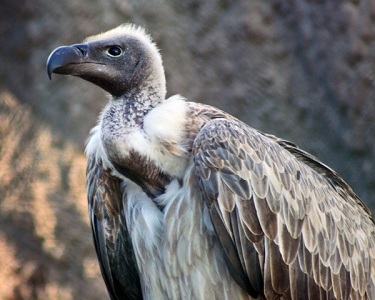
International Vulture Awareness Day
Let the vultures rule the sky again
International Vulture Awareness Day - September 3rd, 2022
Please, observe the open skies and look at the surroundings for a couple of minutes. While you watched, did you happen to see soaring eagles, vultures or other birds, butterflies, wasps, dragonflies, beetles, bees or other insects?. If so, your environment has not yet been completely degraded. And now you may continue the reading.
But, many places look in deserted condition. Vultures are almost wiped out from the majority of the landscape. It is not at all a good sign. The ‘synchronization’ among the species is rhythmic on this earth and every living being has a unique role to co-exist and that rhythm has been disturbed by human beings.
Biologists are warning that our planet is facing the 6th mass extinction. We cannot ignore the extinction of species as a natural phenomenon. Because, at present, the species loss has accelerated to almost 1000 times due to anthropogenic pressures.
According to the International Union for Conservation of Nature (IUCN), 16,306 biological species are on the verge of extinction as of 2020. Each year the list is growing at an alarming rate.
Until forty years ago, the vultures were the commonest birds and now four species of vultures (White-backed, Long-billed, Red-headed and Slender-billed) are also listed as critically endangered by IUCN. This is the final stage before total extinction.
Extinction of an organism will have serious consequences on our ecosystem, but it may not be immediately visible. The presence or absence of a species may not directly affect our lifestyle, so we are negligent about it. The inescapable truth is the existence of all organisms - including humans - are interdependent on one another. Among them, sanitary workers, such as vultures play an important role in the ecosystem's functioning. The present generation has the responsibility and onerous task of protecting this species. I hope that this book will help to lead in that direction.
While I was writing this article, I tried to recollect my memories of when was my first encounter with the Vultures. …..At my home, we had a buffalo with rather long horns. My father took loving care of it and when it died, he wanted to preserve its beautiful horns. Unfortunately, it was not possible so the carcass was discarded along the banks of a river nearby. As the skin was being stripped, several large birds descended quite close to the carcass. I was just ten years old then and was scared watching these birds as tall as me! I later learnt the name of those birds from my father. After getting involved in bird watching at the age of 20, I had a chance to see the vultures in May 1992; I spotted 15 vultures seated on pillars near tanning industries around Dindigul. In 1994, I sighted Egyptian vultures at Thirupuvanam near Madurai in Tamil Nadu.
After that, I had a chance to see the vultures in "Panna National Park” in Madhya Pradesh. I witnessed that a dead cow was consumed by 30+ vultures. And the same evening, I along with the Wildlife Researcher Yoganand, Kattuir S.Mohamadali and A.M. Amsa watched the avenue of long-billed vultures on the cliff along the ken river bank.
Then, on a bird-watching trip about a decade ago, I was with S. Chandrasekar along the river Moyar, where the Western Ghats and the Eastern Ghats meet. To my astonishment, I saw a kettle of vultures moving from the gorge to the plains. Our team started counting. Lo and behold… It was a whopping 105! This was the encounter that led ‘Arulagam’ into vulture conservation.
Then we circled around Tamil Nadu to know the presence of raptors, especially vultures. We also selected the places named after ‘Kalugu" (Kalugu is a general term used for raptors in Tamil). This led us to visit various places such as Kalugu Paarai, Kalugu Mottai, Kalugu Malai and including Thirukkalukkundram. We found no vulture in those areas. While we visited a popular temple town Thirukkalukkundram in 2011, we saw a painting in the temple depicting Egyptian vultures feeding from the hands of a temple priest. This painting is to become true. Vultures are to be ruled the sky. If you had a chance to see the vulture, inform us. If you sighted the vulture, inform.

